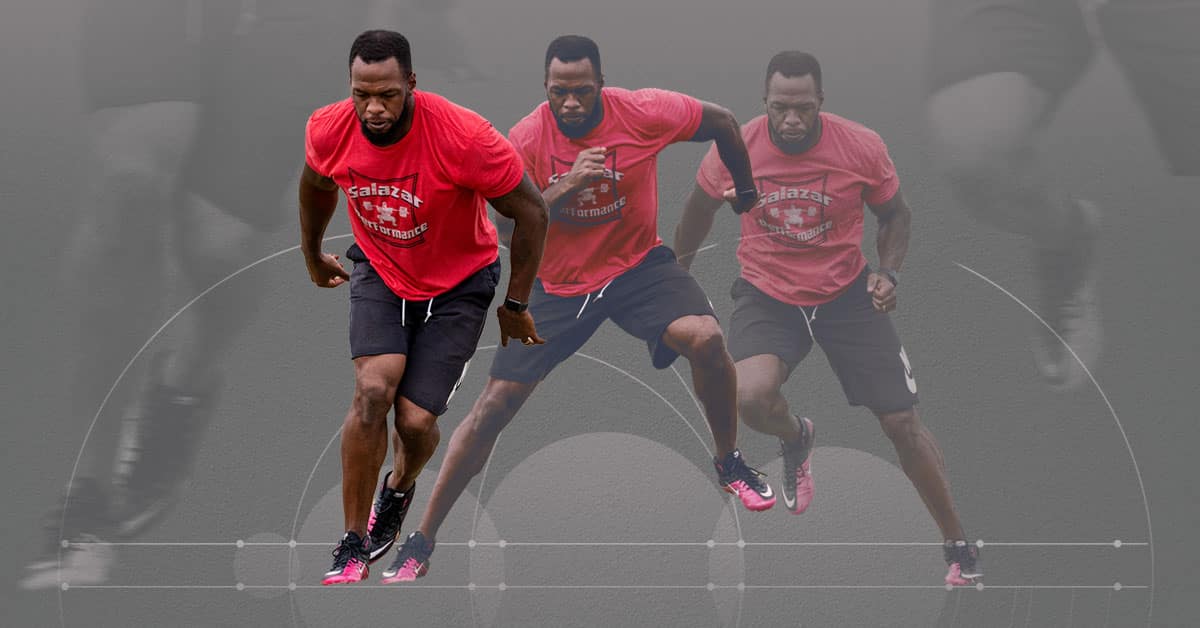
This is a complete guide to box jumps. With detailed breakdowns on technique and how to perform a proper box jump exercise progression.
Featuring lessons from NFL and USTA Strength and Conditioning Coach Brent Salazar and demonstrations from NFL DB Reshard Langford.
In this guide you'll learn:
- The proper positions of the jump phase and landing technique.
- Power development and the benefits of box jumps vs exercises like squats.
- How to determine box height (and why higher boxes are actually hurting your performance).
- The best type of boxes to use.
- A smarter box jump exercise progression.
- Several different box jump drills to improve your athletic performance.
Let's get started.
What Are Box Jumps?
Box jumps are a plyometric exercise that can dramatically increase power and an athlete's ability to generate force. The purpose of the box is to reduce landing forces.
When performed correctly, they target all of the major muscle groups of the legs (glutes, quads, hamstrings and calves).
However, unlike squats or deadlifts, box jump exercises will closely mirror the power and muscle recruitment patterns required in most sports.
There are 2 primary steps involved, the jump and the landing.
The Jump
The jump develops the explosive power, strength and speed. It’s the part of the exercise that shines in the spotlight.
It’s also where many athletes and coaches focus all of their attention at the expense of the landing (which we'll cover shortly).
There are a several different variations/modifications that you can make prior to the jump that alter the difficulty level (e.g. static vs. counter movement, adding hurdle hops etc.). Regardless of the drill, the pre jump position remains the same.
Concentric box jumps are a perfect drill to get a good feel for the proper positions and dial them in. That’s why they’re the second exercise in our box jump workout progression.
It’s a good idea to fine tune the pre-jump position prior to advancing to more complex movements.
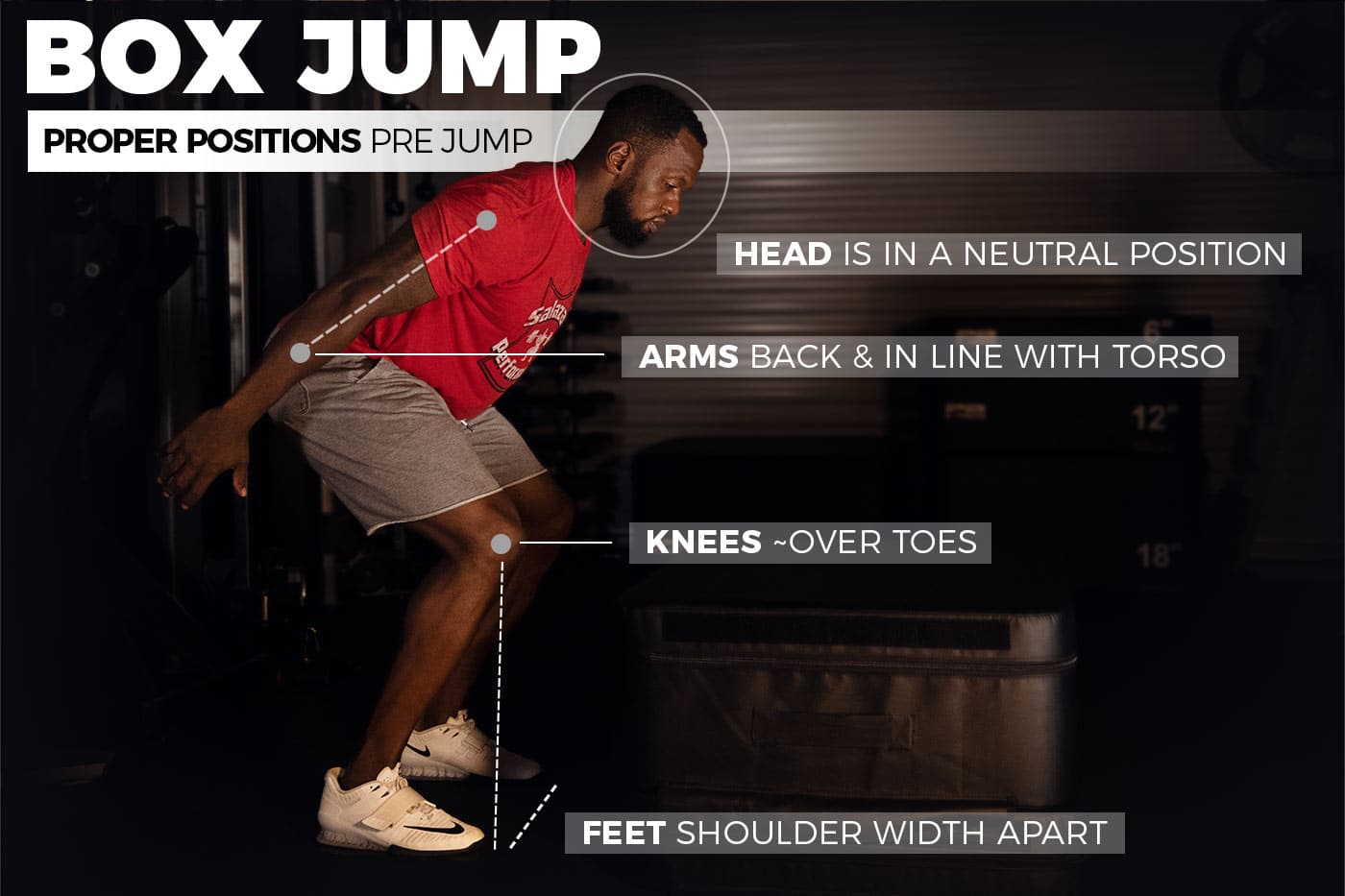
Correct Pre Jump Positions
The Head
The body tends to follow the eyes and the head. This means it’s important to keep the head in a neutral position in-line with the torso (which should be straight).
Athletes that are new to box jumps can have a tendency to tilt the head down. When that happens, posture becomes compromised. The back will tend to round and the center of mass is thrown off.
If you are having issues with balance, head position could be the primary culprit.
The Arms
Arms should be back and in-line with the torso. Starting with the arms any further back will introduce posture and movement issues.
While the arms help with momentum, they are secondary.
Remember, the purpose of box jumps is to develop explosive power with the lower body.
The Knees
The knees should be bent at approximately a 90° angle. This will allow for a proper hip angle, which should also be around 90°.
In this position the knees should be in-line with or slightly over the toes.
This is a solid athletic position that will provide proper balance and maximize power output.
The Feet
The feet should be shoulder width apart. Weight distribution should be mid foot and balanced between the left and right foot.
The ankle angle should be around 60° although this may vary depending on the athlete's range of motion.
Dramatically Increase Strength, Agility and Speed.
Explore CourseJumping Technique
You want to really focus on getting triple extension on the jump regardless of the drill you are performing.
Triple extension refers to the simultaneous extension (increase in angle between 2 body parts) of the ankles, hips and knees.
A lot of athletes struggle with getting full extension from their hips. This is especially true for basketball players or football DBs that spend a lot of time in the classic 'defensive position.'
Make sure to focus on driving the hips through with each rep.
If you are performing box jumps without a coach, get your phone out and video yourself jumping.
A helpful cue is to image that there is a hurdle that is sitting in front of the box that is slightly higher. You want to clear the hurdle and execute a solid landing on the box.
The Landing
The landing is just as critical as the jump. Although as alluded to earlier, it’s often an afterthought or worse - completely forgotten. Many times the landing is ignored in favor of jumping on the highest stack of boxes possible.
Just do a quick search on any social platform and you’ll see what I mean.
Countless videos showing athletes jumping on boxes that are a foot (or three) higher than their actual vertical jump.
It looks impressive until you realize that the deep squat position they are landing in is actually showing off hip mobility, not jumping ability.
A good landing should mirror the same proper mechanics that are used on the field, court, track, etc.
Think about it - how many sports involve landing in a deep squat? The position that you have to get into to jump on a 50” box isn’t even useful for long jumpers or sumo wrestlers.
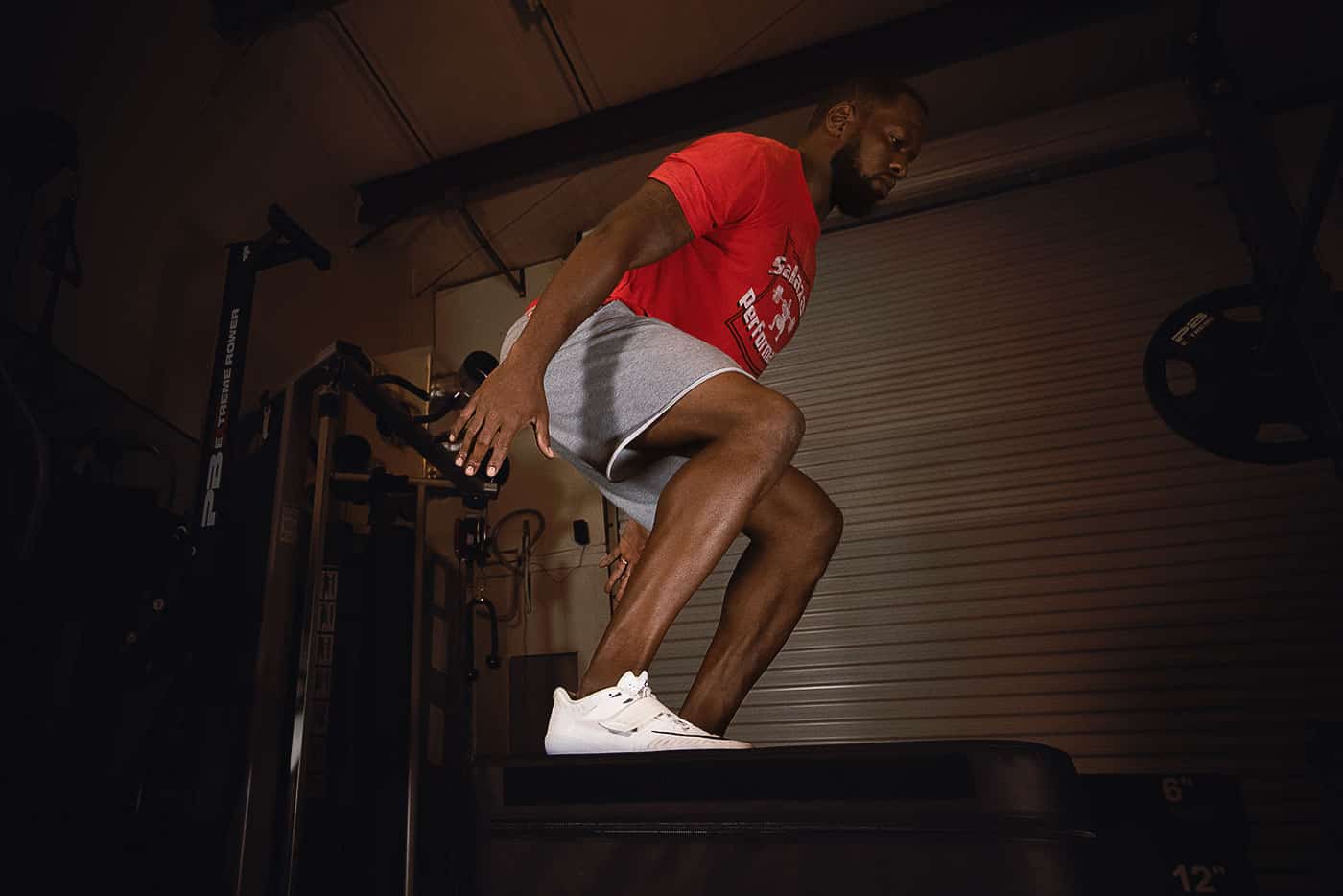
The landing position should look almost identical to the pre jump positions and angles previously outlined.
When performed correctly, the landing develops balance and helps to strengthen the stabilizer muscles of the leg and ankle. It also provides kinetic awareness and activates the stretch-shortening cycle of muscles (when performing more advanced progressions).
Should You Add Box Jumps To Your Training Routine?
You want to train your body in a way that will carry-over to your sport. And when it comes to athletic training, power is essential. That's where box jumps fit in.
Developing strength through slow heavy movements is important. But ultimately power is what matters in sport. Power involves speed - it’s the amount of work an athlete can do per unit of time.
Power is what helps a sprinter explode from the blocks or a long jumper take off from the board. In football, power is the difference between breaking a tackle or being stuffed at the line of scrimmage.
Even in events like the shot put or discus throw, power, not strength, is the ultimate driving force.

That’s not to say that box jumps are a replacement for squats and other compound lifts. In order to develop power you need strength.
A proper training routine will absolutely include some type of squatting pattern and plyometrics.
Both exercises target similar muscle groups although they do so in a different way. Squats build the strength and box jumps help to translate that strength into speed and power.
Studies have shown that performing heavy lifts such as squats, immediately followed by a matched plyometric exercise, can have a synergistic effect on power development.
This type of training is often referred to as Contrast training. Squats combined with box jumps are an excellent way to introduce contrast training into your routine.
So if you are looking to increase your speed and power output then box jumps are a fantastic tool to add to your training routine. They require minimal equipment, place minimal stress on the joints and don’t require a lot of time for maximal results.
"What if I'm not an athlete training for a specific sport?"
If you are exercising you’re an athlete. Adding some variety to your workout and challenging your nervous system certainly falls into the ‘improved wellness’ bucket.
Power and speed aren't just reserved for athletes that actively competing in a sport. Fitness is an ever continuing journey.
Exercises like box jumps—and sprinting—build explosive power and deliver benefits that go far beyond performance. Check out the incredible things sprinting does for your body.
Developing and maintaining balance and coordination with plyometrics now will prepare you for the Centenarian Olympics in the future.
How To Determine The Correct Box Height
Higher boxes are not better! The boxes are there to reduce the landing forces. They should not be used as a tool for visual feedback to inflate egos or 'one- up' a teammate. A great starting point for most athletes is around 18 to 30 inches.
Of course the box height will vary somewhat depending on individual jumping ability. Younger athletes might need to drop down to 12-18 inches. While someone with a 36”+ vertical might want to go a bit higher than 30".
But keep in mind that Reshard Langford (the athlete demonstrator in the videos below) was an NFL defensive back. His vertical is 38” and he uses 30” boxes for box jumps.
If an athlete is fighting for the landing position that means the boxes are too high. Drop the ego and drop the box height.
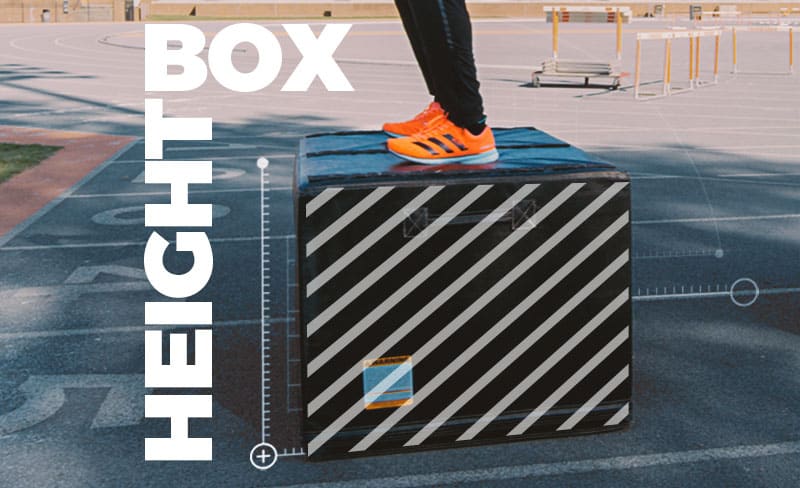
Box Selection
When selecting the actual box the best option is a foam based plyo box. Avoid wood or the steel platform boxes if possible. Opting for a softer surface will help to reduce the landing force. Safety is another major consideration.
On more than one occasion I have personally witnessed unnecessary injuries to shins and knees from wood boxes. All it takes is a momentary lapse in concentration towards the end of a workout to botch the landing.
A foam box might bruise your ego. A steel or wood box will bruise your entire lower legs (or worse).
Bonus Tip: When possible set up a smaller box that you or your athlete can step down to after each rep. Jumping or navigating off a 24” box to the hard ground is counter productive. It adds fatigue with no training benefit and should be avoided.

Box Jump Drills And Training Progression
Drill 1 - The Depth drop
Dial-in your landing position by performing a depth drop. Developing your landing technique prior to moving on to full box jumps is an important step. Depth drops are also a great way to spot and fix movement pattern issues such as caving-in at the knees.
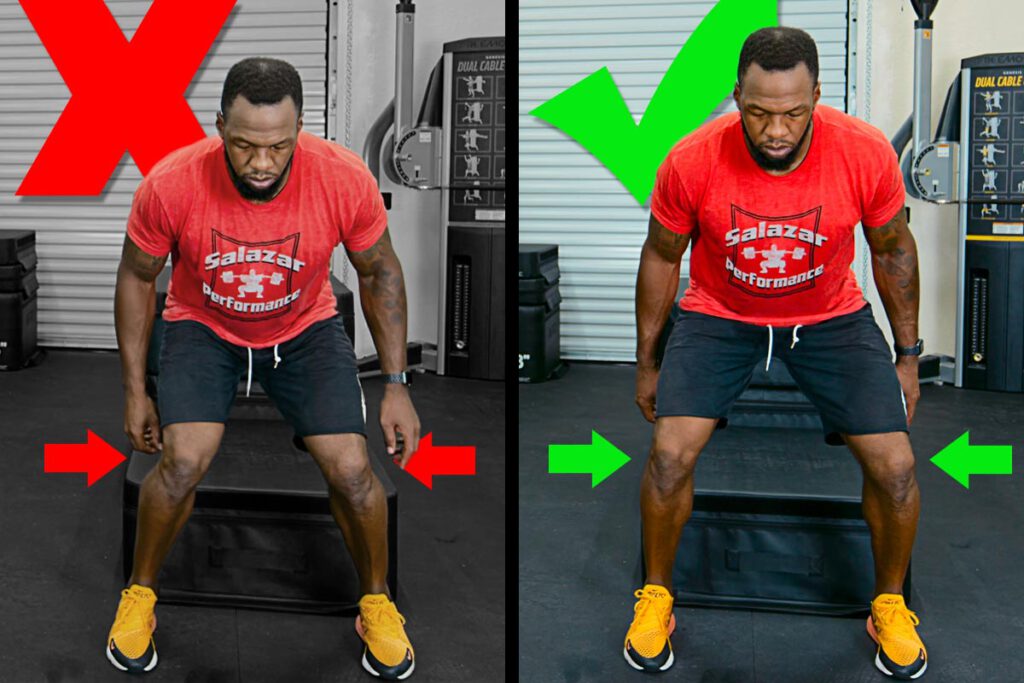
How to perform: Get a box that is around 12”. The box doesn’t need to be very high to perform this drill. Anything much taller than 12” will create unnecessary stress on the joints and muscles.
- Step off the box and land with both feet ~ shoulder width at the same time.
- Land in an athletic position. Arms should be back, knees slightly bent.
- Weight distribution should be mid foot. Falling forward or backward is a good indication that your center of gravity is off.
- Check alignment. Knees should be in-line with the feet. A simple fix for this issue is to use a band around the knees. This will develop awareness and direct feedback of knee movement.
Drill 2 - Concentric Box Jumps
The goal of the concentric box jump is to eliminate any counter movement. The jump should be initiated from a static position. Drive up with your hips and hit triple extension. Avoid excessive arm movement.
Box height for this and all subsequent drills should be between 12” and 28” depending on your jumping ability.
- Start on your toes with arms straight up. You want to make yourself as tall as possible.
- Snap down to an athletic position on balance with weight on the mid-foot.
- Hold this position for ~2 seconds.
- Jump up and land in the same position as the first drill (the depth drop).
Drill 3 - Counter Movement Box Jumps
Adding the counter movement is going to increase force production and will begin to involve the stretch reflex . Adding the counter movement will naturally increase jump height.
- Start in the same position as the concentric box jump. Arms overhead stretched and standing on toes.
- Snap down to the athletic position and in a continuous movement execute the jump.
- Land with proper mechanics and strive for a soft contact.
Drill 4 - Counter Movement with Lateral Hop
This drill expands on the previous one and adds a bit more complexity. The purpose of this exercise is to introduce some controlled lateral movement.
- Start in the same position as the previous drill.
- Snap down to the athletic position.
- Pause to kill your momentum.
- Perform the linear hop while facing forward over the mini hurdle. In one continuous movement jump on the box.
- Land.
Drill 5 - Counter Movement with Lateral Hop - continuous
Now we are working on lateral forces changing to linear forces. This drill builds on the previous one by eliminating the pause before the jump.
- Start in the same position as the previous drill.
- Snap down to the athletic position.
- Perform the linear hop over the hurdle. In one continuous movement jump on the box.
- Land.
Drill 6 - Counter Movement with 90° rotation
This drill adds rotational movement and really challenges the landing position on the quarter turns.
- Start facing 90° clockwise to the box. Body position is the same as the previous drills.
- Snap down to the athletic position.
- Perform a 90° rotation counterclockwise. Land in the athletic position on the ground.
- Jump on the box in one continuous movement.
- Land.
Box Jump Workouts - Number Of Sets And Reps
Determining Sets
Plyometric training is like strong medicine. As a general rule you should always use the minimum effective dose.
Determining the number of sets to perform for optimal results depends on several different variables and is highly specific to the individual. This is especially true for competitive athletes.
Some of the biggest factors to consider are:
- Where they are in their training cycle. If an athlete is in the general preparation phase (pre season), the volume of plyometrics will typically be much higher when compared to the competition phase.
- What does their overall training load look like for that day, week month etc. Take a sprinter as an example. If that days track workout featured plyometrics on the track i.e. hurdle hops, bounds etc. then the volume of box jumps should be reduced and vice versa.
- What is their skill level. A seasoned athlete that has ownership of all the positions might skip the depth drops, do one set of concentric jumps and focus more time and energy on lateral and rotational hops. A beginner should most likely do the opposite. So performing 3-4 sets of depth drops, 3-4 sets of concentric jumps and maybe 1-2 sets of counter movement jumps and that’s it.
- How well they respond to training. Some athletes need (and can handle) a tremendous training volume. While others just need 1-2 sets to get the same response. Sprinting coach Ken Harnden has a great story about the extreme difference in training volume of 2 world class sprinters he coached (starts at the 0:50 mark).
Determining reps
Unless you are a CrossFit athlete, box jumps shouldn’t be used as an aerobic conditioning exercise. They are most effective in the lower repetition range (6-10). If you want to build power you need to target the anaerobic system. Fast twitch muscle fibers respond best to fewer high quality reps.
Workout Routines
With the above caveats in mind, here are some good starting points:
Beginners
- Box Height: 18 inches.
- 2-3 times per week, lower intensity focusing on technique.
- Rest time between sets: 30 seconds to 1 minute.
- Depth Drops: 3-4 sets x 6 reps. Have someone watch or film the landing position. Pay attention to knee and ankle movement.
- Concentric Jumps: 4 sets x 6-8 reps. Really focus on mechanics.
- Counter Movement Jumps: 2-3 sets x 6-8 reps.
Intermediate
- Box Height: 18-24 inches.
- 2 times per week, moderate intensity on the first 2 drills. Gradually build to maximal efforts on the counter movement jumps. Then dial it back to ~80% intensity on the lateral hops.
- Rest time between sets: 1 - 1:30 minutes
- Depth drops: 1 set x 6 reps
- Concentric Jumps: 3 sets x 6 reps.
- Counter Movement Jumps: 3 sets x 8 reps. High to maximal effort on these efforts.
- Lateral Hops: 2 sets x 6 reps.
- Lateral Hops- Continuous: 2 sets x 8 reps.
Advanced
- Box Height: 24-32 inches.
- 1-2 times per week - high intensity/ near maximal effort for all jumps. The reps are lower to really emphasize power output for each jump.
- Rest time between sets: 1 - 2 minutes. Enough recovery to keep the intensity very high.
- Concentric Jumps: 2 sets x 6 reps.
- Counter Movement Jumps: 3 sets x 6 reps.
- Lateral Hops: 3 sets x 6 reps.
- Lateral Hops- Continuous: 2 sets x 10 reps.
- Counter Movement with 90° rotation: 3 sets x 6 reps.
Advanced Contrast Training Routine
- Box Height: 24-32 inches.
- 1 time per week - high intensity/ near maximal effort for all jumps (except first set).
- Rest time between sets: minimum 2 minutes (after the set of squats and jumps).
- Should be fully warmed up and prepared for heavy squats.
- Concentric Jumps: 1 set x 8 reps. Slow and focusing on form ~60% intensity. Rest for 2 minutes.
- Squats: 8 reps at 70% of 1 rep max. After 8th rep move directly to jumps (no rest).
- Counter Movement Jumps: 1 set x 6 reps. Rest for at least 2 minutes.
- Squats: 6 reps at 80-85% of 1 rep max (should have some difficulty on 5th and 6th rep). After 6th rep move directly to jumps.
- Concentric Jumps: 1 set x 8 reps. Rest 3 minutes to get as much recovery as possible.
- Squats: 8 reps at 60% of 1 rep max. Slow 5-7 second count on the way down and then as fast as possible (while still under control) on the way up. After 8th rep move directly to jumps.
- Counter Movement Jumps: 1 set x 10 reps. Really push and try to make these as fast and explosive as possible. If the last 3 or 4 aren't really challenging then you didn't make the squats hard enough.
Now It's Your Turn
We really hope you enjoyed our complete guide to box jumps.
The video sections are excerpts from Brent Salazar's outstanding master class ‘Smarter Strength and Athletic Development.’ If you're serious about strength and power development and want to learn from one of the best trainers on the planet, we highly suggest checking it out.

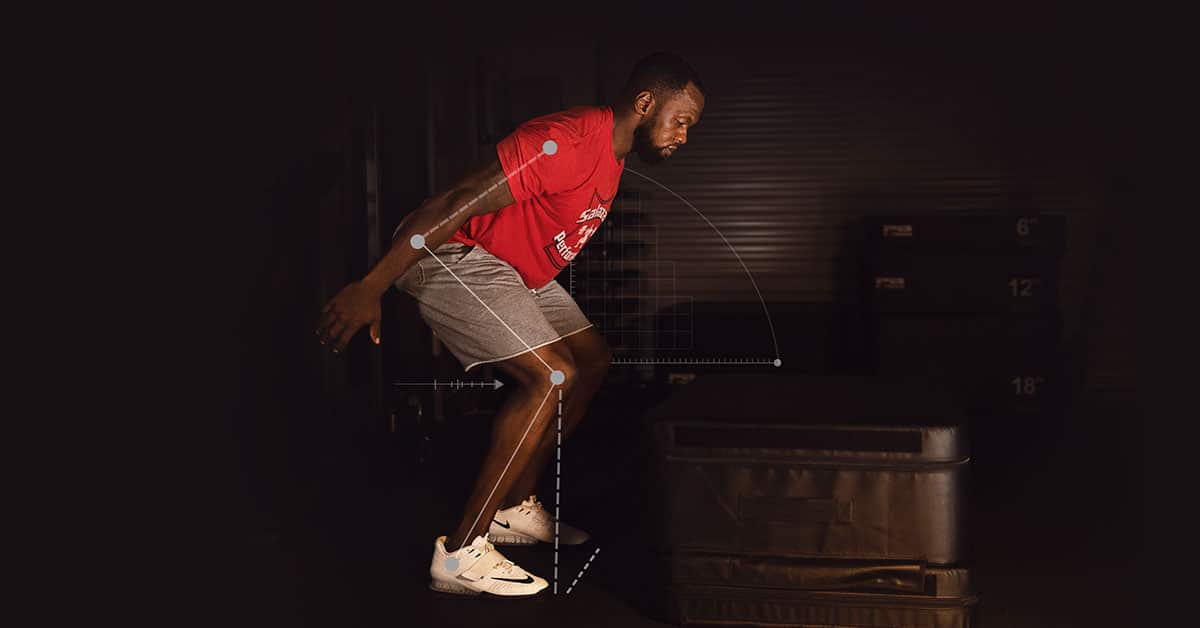
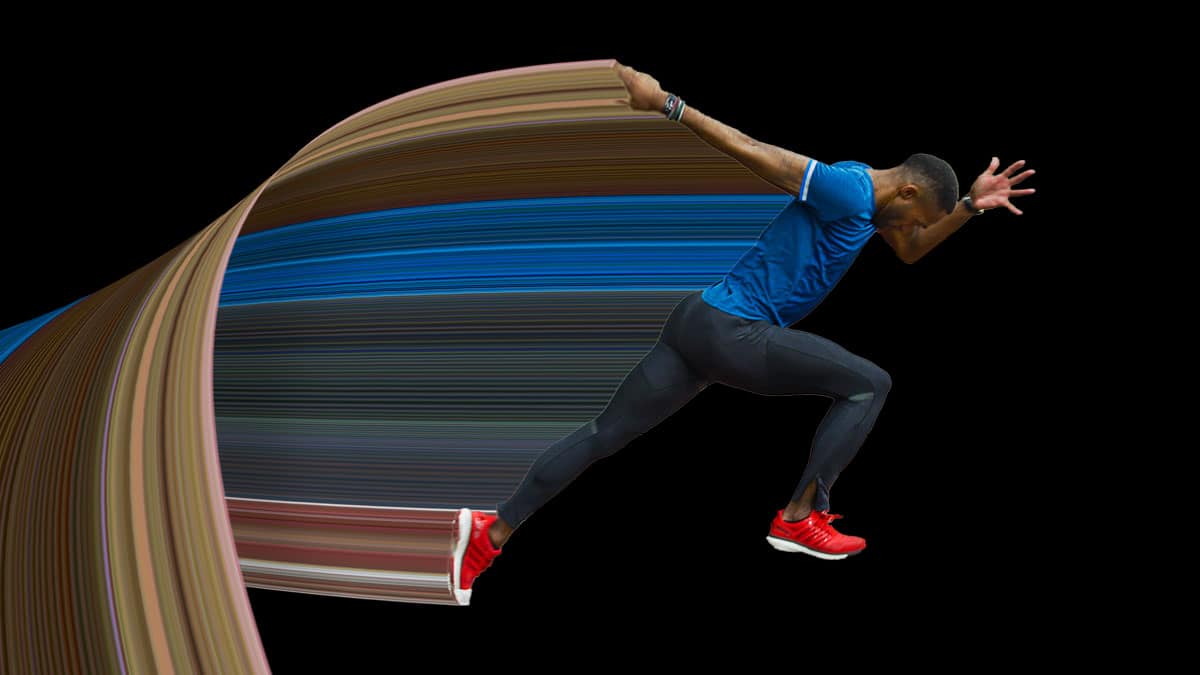
I used to do box jumps with my Dad and brother and got back into doing them in college. It's a fun and challenging addition to my workouts and this article is certainly the most comprehensive and informative one I've found! I feel more confident in my box jumps and feel they are more explosive and safer after following the advice in this article. Thank you!
Appreciate the kind words Emma! It’s awesome that box jumps have been a part of your workouts for so long. You are right in that box jumps definitely reduce the landing forces vs plyometrics. I’m glad the article helped you feel more confident and explosive—keep it up!